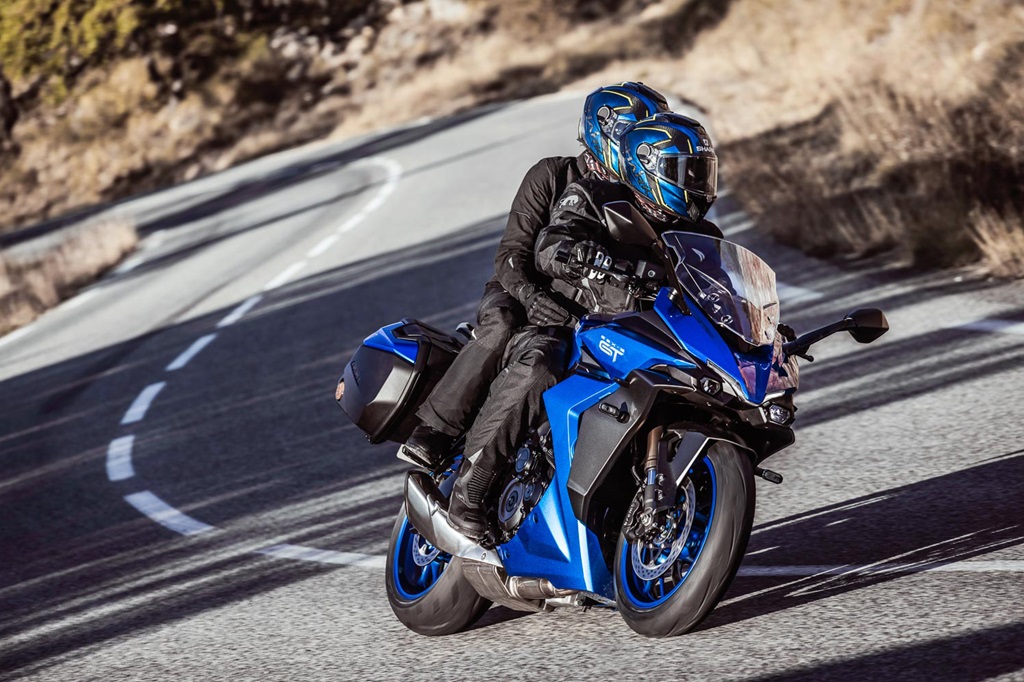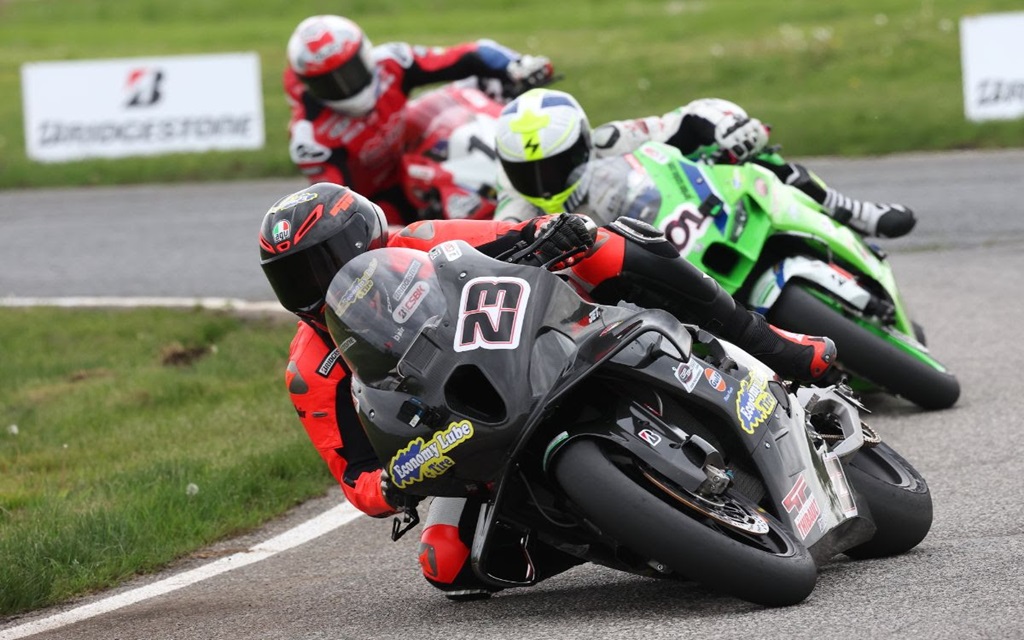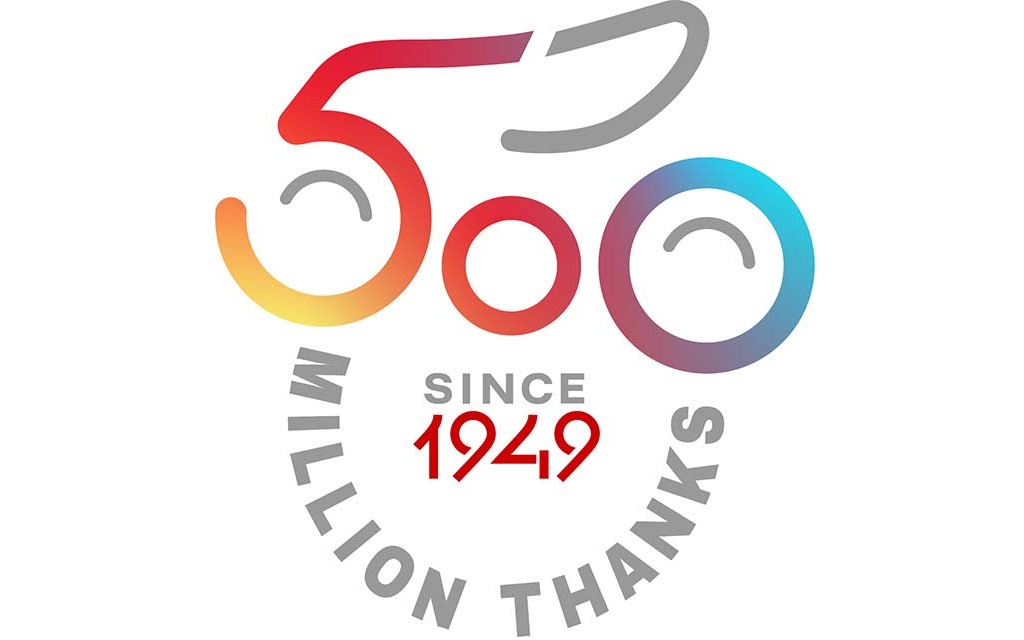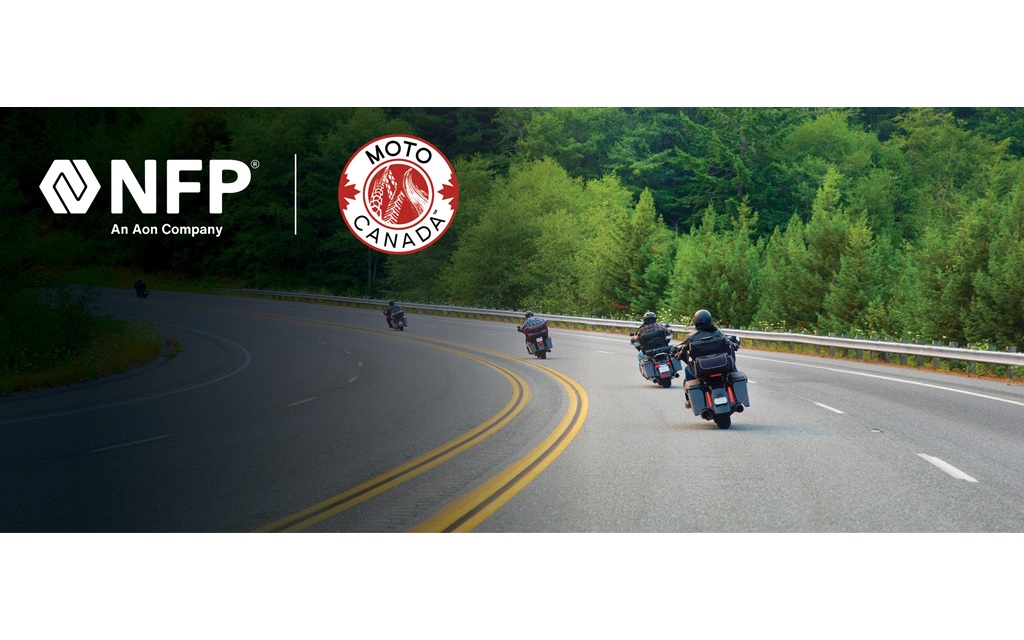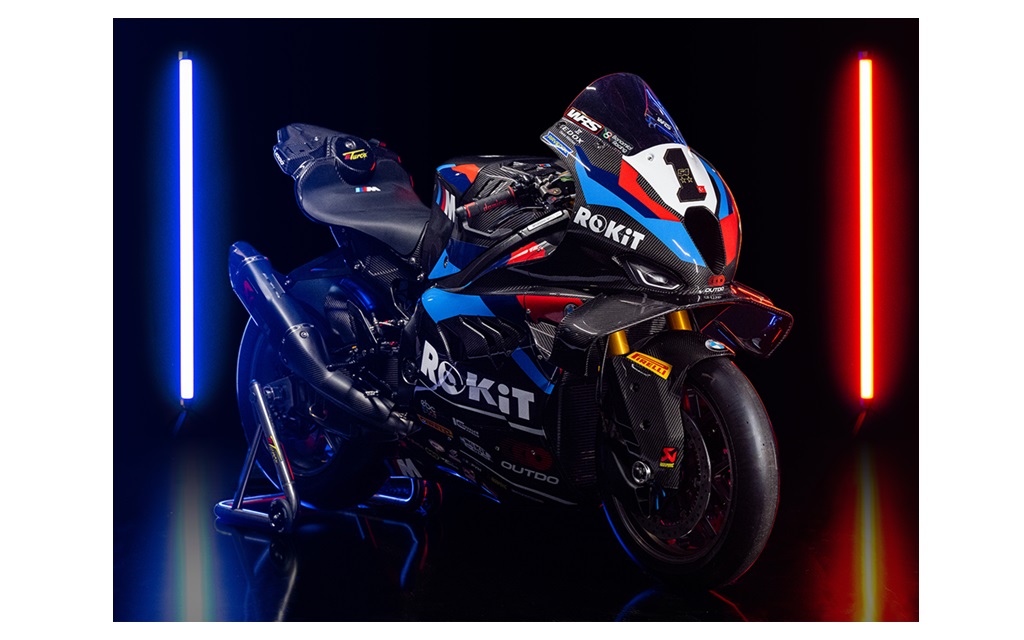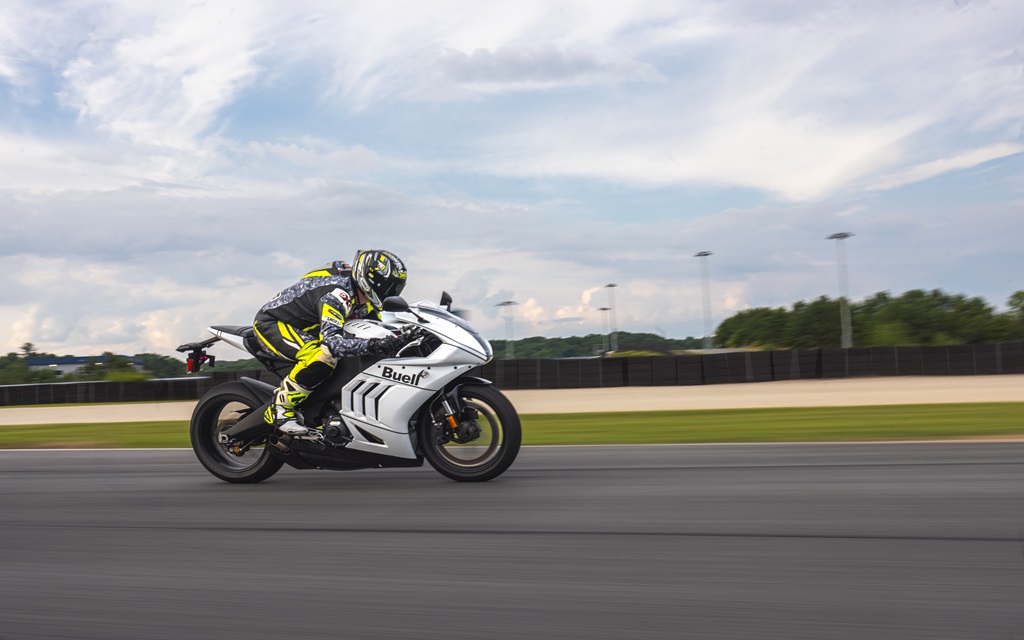The GSX-S1000GT is now Suzuki’s sole modern sports road bike. It is designed to travel far and fast with all your stuff, solo or two-up. I had the chance to spend two days on the blue machine last summer, in order to evaluate its sports travelling skills.
The 2010 decade has been ruthless for Gran Turismo motorcycles. Indeed, amazing travelling machines (BMW K1300GT, BMW K1300S, Honda VFR800, HondaVFR1200, Honda ST1300, Kawasaki Concours 14) have disappeared from their manufacturer’s catalogue, sometimes because they did not meet the anti-pollution standards, sometimes because they did not sell well enough anymore to justify their production. In Canada, the Yamaha FJR1300 is the only survivor of the group. But for how long?
Even the sports road bikes category is shrinking away. Excellent machines like BMW’s R 1250 RS and R 1250 RT, Kawasaki’s Ninja 1000SX and Ninja H2 SX, or KTM’s 1290 Super Duke GT, are the last survivors in a class that used to be praised and prolific. The adventure bike trend keeps marching on and leaves nothing behind but scorched earth, like Attila and his Huns.
However there’s still hope, with bikes such as the Suzuki GSX-S1000GT we’re testing here, and others like Honda’s NT1100 (which unfortunately won’t be imported in Canada, rumour says) and Moto Guzzi’s V100 Mandello, which has just been launched in Europe. These models lead the way to the renewal of the big road bikes category; and they are joined by other fine neoGT road machines such as the sublime BMW S1000XR, the amazing Ducati Multistrada V4S and the super-high-performance Yamaha Tracer GT.
Indeed, riding the Suzuki GSX-S1000GT makes you realize that GTs did not surrender and that, they too, have significant assets to offer, such as undeniable sporting skills combined to superb comfort and a surprising ability to pile up kilometres. This is especially true if you’ve been brought up with machines like the Honda CBR1100XX, Kawasaki ZZR1100, ZX-12R, ZX-14R, or Suzuki Bandit 1250S and Hayabusa in your early days.
Sport-GTs propose another way of travelling and discovering the world. With the landscape moving fast around you, as in a movie in soft focus. Creating an old-fashioned ambiance where mechanics and poetry blend in. All this with a touch of nonconformism. Personally, I am a fan!
To evaluate the Suzuki in its natural habitat, we went for a two-day 800 km ride on secondary roads, including the 132 between Montréal and Québec City. However, our GT test model was not fitted with the sidecases and high windshield that should have been standard equipment. These accessories were not available in Canada at the time of the test – and they still aren’t according to many friends who recently took possession of their GSX-S1000GTA and are still waiting for them.
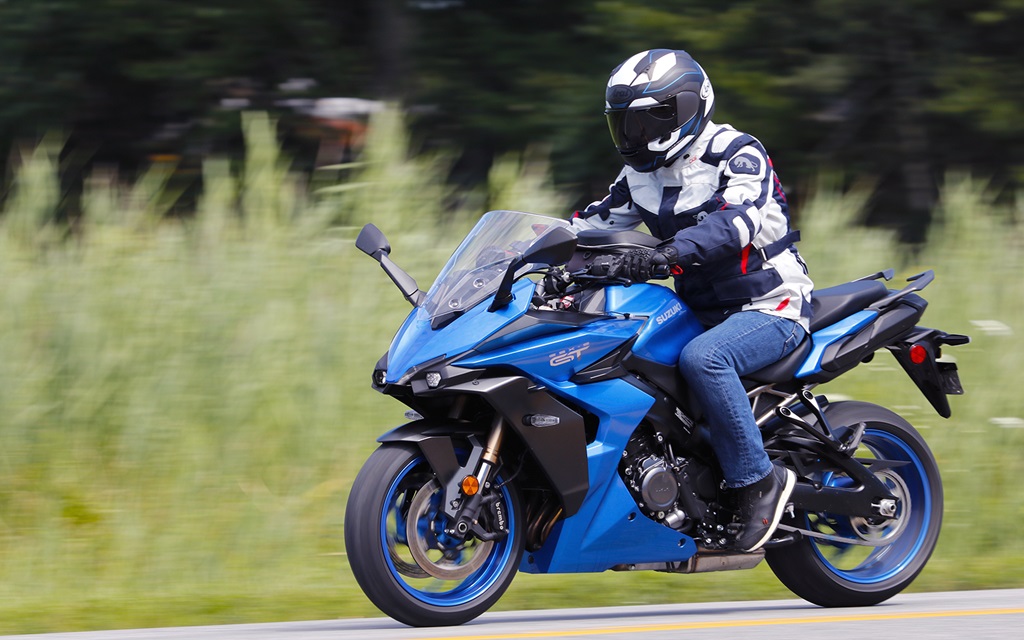
A tried-and-true basis
Based on the GSX-S1000, that was revamped in 2021, the GSX-S1000GT features sharp lines that inevitably evoke the look of Kawasaki’s Ninja 1000 SX. It’s a real sports bike dressed up with a wraparound fairing that’s designed to travel far and fast with all your stuff, solo or two-up.
The GT retains the GSX-S1000 chassis and Euro5 engine, which now puts out 152 hp at 11,000 rpm with a torque of 79 lb-ft at 9,250 rpm. The 999 cc inline four throws its burnt gases into a neatly integrated chubby 4-in-1 muffler that’s designed to avoid aerodynamic interferences. Power is delivered through an anti-dribble clutch (SCAS – Suzuki Clutch Assist System) to a six-speed gearbox with an up and down quickshifter.
Suzuki installed electronics previously seen on the Hayabusa and V-Strom 1050XA, including S.I.R.S. (Suzuki Intelligent Ride System), Ride-by-Wire electronic throttle control, three SDMS riding modes, five-level traction control, and standard ABS. There’s no Inertial Measurement Unit (IMU), however.
All the relevant information is displayed on a new 6.5-inch TFT colour screen connected to Suzuki’s mySPIN application, which also integrates GPS navigation. There’s a USB port on the left side of the screen.
The GSX-S1000GT is fitted with a specific rear subframe reinforced to hold the optional waterproof sidecases. It is not rated for a top case, though.
The seat rails have been lowered, allowing the passenger to sit on a thicker cushion. The high-grip seat covering and the passenger grab handles are new. The seat is 810 mm high and the weight is 226 kg.
The GT is equipped with adjustable Kayaba suspension components (inverted 43 mm fork, progressive rear shock) and new aluminum wheels wrapped in Dunlop Sportmax Roadsport 2 tires.
Suzuki offers numerous accessories for the GT. Besides the sidecases, you can also buy a touring screen (70 mm higher), a special seat, heated grips, red Brembo brake calipers, carbon fibre items (clutch, starter and alternator covers, as well as fenders), axle protectors, no-contact tank bags designed by SW-Motech, gas tank protectors and wheel decals. There’s everything you need to personalize your machine.
Let’s hit the road
The GSX-S1000GT was waiting for me in Deschaillons-sur-Saint-Laurent. As soon as I got there, I took a few minutes to install the mount for my GIVI XS319 Tanklock tank bag, my GIVI UT813 Ultima-T cargo top bag and my SP-Connect phone holder. So equipped, the Suzuki partly recuperates its touring potential, despite the missing sidecases.
In person, the particular aesthetic of the GT do not appear as divisive as on pictures. In its press kit, Suzuki describes it as avant-garde and inspired by fighter jets, adding it expresses comfort and performance. Personally, I would not go to the extent of saying the lines are harmonious, but they do express a unique personality that’s all of its own and leaves nobody indifferent. The fit and finish and general quality feeling are up to par. Lighting and flashers are taken care of by light-emitting diodes (LEDs).
After checking the different controls and getting used to the dashboard, I am ready to hit the road for a two-day middle-distance journey. The large colour screen delivers a nice display with an automated day/night function. It presents a lot of information and is very legible. What’s more, it can be connected to your smartphone through Suzuki’s MySpin application, so you can manage phone calls, music and a GPS. Speaking of which, it’s too bad the app does not offer the Apple Carplay/Android Auto options; these are clearly superior and more user-friendly than the applications developed by the manufacturers, which are rarely up to par and need to be reconnected every time you restart the bike.
Right after taking off, I am pleasantly surprised to see how quickly you feel at ease aboard the GT. This is in part due to its 32 mm wider handlebar that’s also positioned higher and closer to the pilot. The riding position is almost upright, with the torso slightly leaning forward and moderate weight on the wrists.
The controls are easy to reach, and most are well positioned. The exception is the on-off button for the cruise control. It is on the right side – the throttle side – whereas the other settings (RES/+ and SET/-) are controlled from the left side. Why make it simple when you can make it complicated?
The 810 mm seat allows you to put both feet firmly on the ground. The angular gas tank is narrow at the base so one can take place easily. As with the Kawasaki Ninja 1000 SX, the riding position is rather sporty. The well-padded seat is comfortable – at least for the pilot. It keeps you firmly in place while allowing you to easily move around; it’s almost touring-like in the circumstances. The passenger enjoys a fairly comfortable seat, though slightly slippery, and can count on two large grab handles, ideally located. A good compromise between sporting skills and touring abilities.
The fairly high footpegs reinforce the sporty side of the GT, which is perfectly in tune with its vocation. They allow the pilot to firmly guide the machine when initiating a turn and make angle corrections easier.
So, the initial contact is very positive.
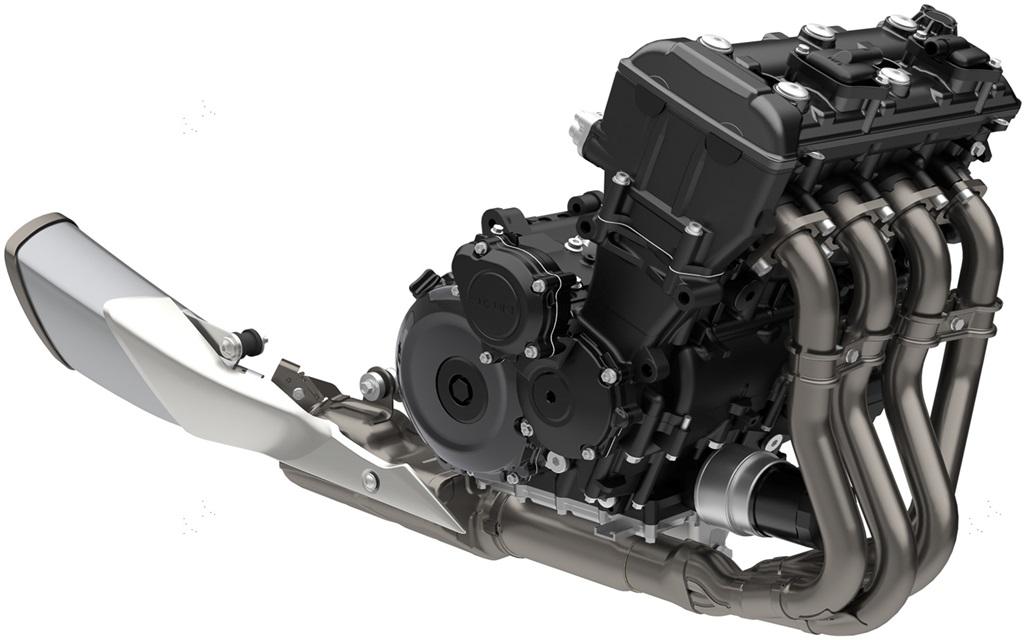
A sports engine inheritance
Despite its high-power output, the engine is smooth and very progressive. Power goes through the SACS anti-dribble clutch and then to an excellent six-gear transmission with a top-notch up and down quickshifter – one of the very best I have tried so far. The engine behaves like a typical Japanese in line four: a throaty rumble at low revs followed by a raging roar that makes you shiver as it picks revs up to the redline. This mill is pretty linear and responds forcefully at all engine speeds. The throttle response when turning the gas back on is smoother than on the previous GSX-S1000, and it’s easier to get a steady acceleration between 2,000 and 3,000 rpm. The big four can be logged as low as 2,000 rpm and then pick up without complaining, which corresponds to 70 km/h in sixth gear. That tractability is particularly useful in city driving because the engine will respond nicely no matter the rpm. This is clearly a sports engine, but it will also be appropriate for most pilots, whatever their experience level.
At low revs, the inline four is solid and torquey. It is pretty healthy at low and mid revs, delivering clean and muscular accelerations, especially over the 7,000 rpm mark. It’s supple and pulls non-stop up to the redline, that starts at 11,750 rpm. The Hamamatsu mill kept the ardour of the GSX-R1000 K5 engine it’s based on, as well as its solid mid revs power and remarkably wide powerband. At mid revs, some parasite vibrations can be felt in the handlebars, the seat and the pegs, especially between 4,000 and 6,000 rpm. Personally, they did not bother me much. That’s a typical characteristic of the inline fours I am used to. Nothing redhibitory, therefore!
Yes, this engine responds in a smooth and linear manner until 7,000 rpm, but it then wakes up big time and becomes downright dazzling. From 8,000 rpm on, it pulls very hard and shows its supersports legacy, especially in driving mode A, the most dynamic.
The four-into-one exhaust produces a flattering, rich sound, especially when you twist the throttle hard and let the mill spin furiously. This sound is enhanced by the intake noise from the airbox, located right behind the steering head.
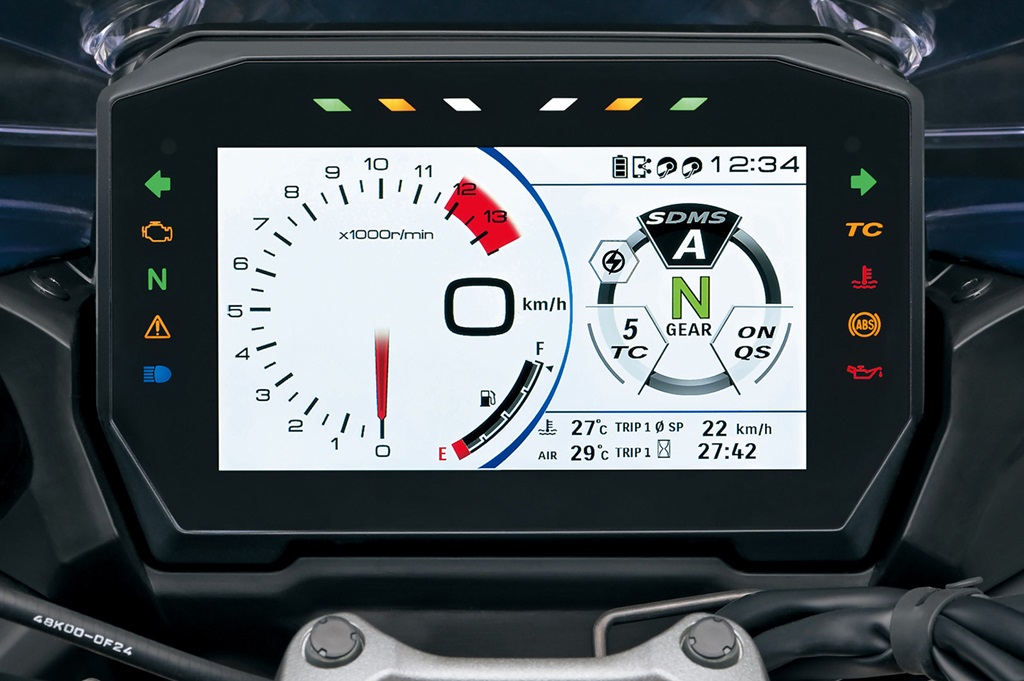
Basic electronics
The GT offers three different riding modes: A (active), B (basic) and C (comfort), from the most dynamic to the smoothest. You can choose the mode that’s best suited for the situation or simply pick the one that delivers the throttle response you prefer. In all cases, the engine remains sporty and the maximum power remains available; the difference is that the 152 horses can be released with more or less eagerness, and the smoothness of the mill allows for a precise tractability control. What’s more, the traction control is efficient and almost fully transparent. The B-mode is fine for cool rides and city driving because it is smooth and precise. However, even in A-mode, with traction control at its minimum level, the motorcycle remains easy to control.
Continuing with electronics, let’s not forget the Low RPM Assist system, which reduces the risk of staling the engine at take-off, the Suzuki Easy Start System and the SCAS anti-dribble assisted clutch.
The cruise control is the electronic feature I like most. It’s essential for long rides. This one is intuitive, simple and easy to use. Too bad the controls are split on the right and left side of the bars, making it more complicated to use for no reason.
I also like the Suzuki Intelligent Ride System (S.I.R.S.). It allows you to optimize the performance characteristics of the suspensions in order to better suit your driving style or level of experience, and keep concentrated on piloting. The S.I.R.S. brings extra confidence and fun by making the GT nimbler, more predictable and less tiring, be it for long-distance rides or short sports spins on familiar roads. There’s no Inertial Measurement Unit on the GT, and no active driving aids when the bike is leaned.
On a more critical note, I simply hated the MySpin app; it is not intuitive nor efficient. It brought me more problems than it solved, and I eventually uninstalled it from my phone which I then used on its support, connected with my SENA communication system through Bluetooth. Improvement imperatively needed here!
A solid chassis
Despite its imposing size and a wet weight of 226 kg, the GT is not intimidating. This is a very stable motorcycle, thanks to its long wheel base and sports bike architecture. The chassis is built around an aluminum frame with two massive beams in which the engine is hung. The tubular rear subframe is reinforced and the aluminum swingarm is connected to a Kayaba shock, adjustable for spring preload and rebound damping. Up front, the 43 mm inverted Kayaba fork has adjustments for compression, spring preload and rebound.
At low speed, the direction is somewhat heavy and the pilot needs to put some muscle in. It gets easier to guide only when you reach 30 or 40 km/h. This is due in part to the round profile of its poor quality tires. Indeed, the GT is shod with Dunlop RoadSport 2 tires that do not serve it well and bridle its sporting attributes. To be changed as soon as the GT is broken in. This is an investment you won’t regret, especially if you like sports driving.
On winding roads, it’s clear that the GT benefits from the sporting DNA inherited from the 2005 GSX-R. With its 19-litre gas tank filled up, it can’t be described as a featherweight, but it turns out to be surprisingly nimble and agile, especially in tight turns where its front end inspires confidence. In long fast sweepers, it is hyper stable, as if it was riding on rails. The GT is dynamic and precise, even when leaned over, and it invites you to attack curves enthusiastically.
It must be said that the high quality KYB suspension, adjustable front and rear, also helps. Once properly set, the fork and shock work perfectly. They deliver a solid behaviour for sports piloting, and comfort for quieter rides. Even when going through road imperfections. The pilot only gets a little shaken under hard compressions or when hitting big bumps.
Braking is taken care of by Brembo 4-piston radial calipers with 310 mm discs up front, and a single-piston Nissin caliper with 220 mm disc on the rear wheel. ABS is standard. Upfront, the braking action is powerful and easy to modulate. The initial response is smooth and the braking power builds up progressively as you increase the pressure on the lever. Both levers are adjustable, of course. Personally, I would have liked a little more grip from the front brake. The powerful, yet predictable, rear brake helps position the bike on angle. The ABS is unobtrusive.
Ergonomics and protection
The Suzuki GSX-S1000GT is more than a roadster with a fairing. It’s an authentic Sport/GT machine that encourages you to ride for long periods and reach far away destinations, piling up kilometres in perfect serenity. With its standard non-adjustable windshield, protection is adequate, but you do feel a certain pressure on the helmet and shoulders at high speed. I would have liked to try out the higher windshield of the GTA to evaluate its effectiveness. At 130 km/h, in sixth gear, the engine purrs at 6,000 rpm. At this point, the vibrations fade and the protection offered by the integral fairing is pretty good overall. The fairing delivers good aerodynamics and allows the air to flow in an optimal fashion through the lateral openings. Here again, I would’ve liked to try out the sidecases to see if they’re as efficient as Suzuki says in its press kit. Indeed, the Hamamatsu firm proudly explains that they spent many hours in a wind tunnel to perfect the aerodynamics of the GT.
That being said, in its base configuration, the GT allows you to ride fast, without any excessive fatigue. The comfort is globally good, except that the firm foam of the seat can become irritating after a long day on the road. In fact, this bike just needs an adjustable windscreen, a more comfortable seat and heated grips (three accessories that are offered as options) to transform into an accomplished touring bike. You should also add quality sports tires if you want to freely express your racing spirit.
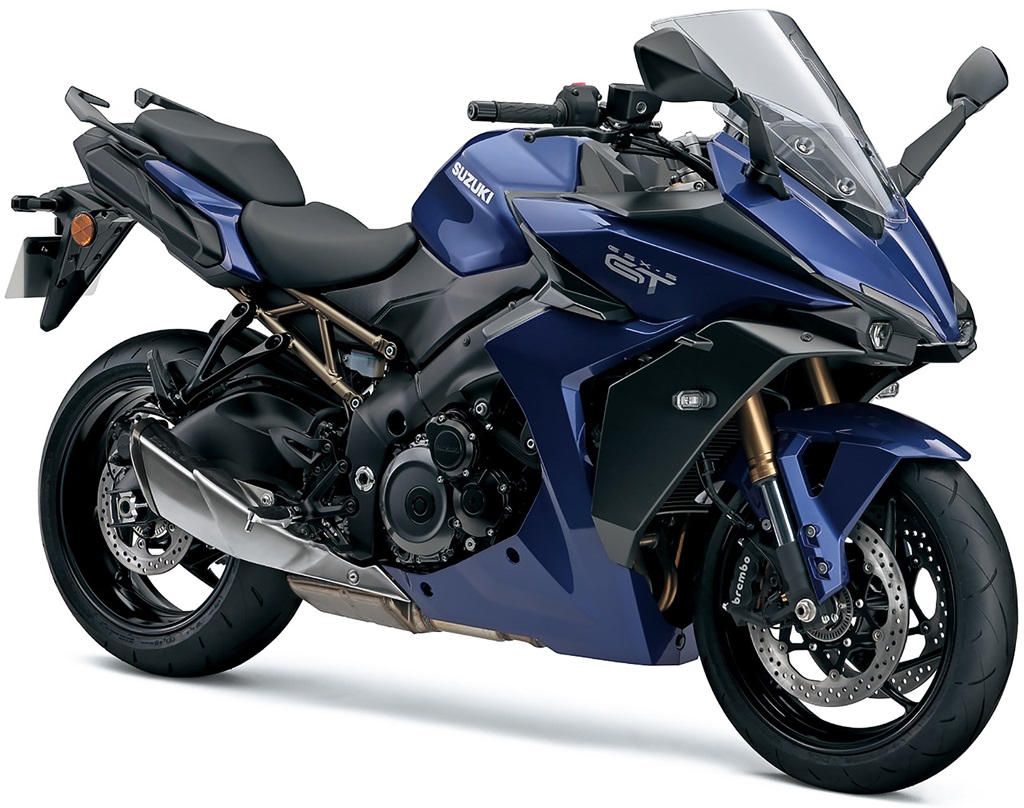
A laudatory verdict
I was eager to try out the Suzuki GSX-S1000GT. I have always been an aficionado of sports-oriented road bikes and other Sport-GT models because they combine two qualities that are essential for me: sporty behaviour and comfort.
This GT delivers both qualities with flying colours. If you remove the touring accessories, it can be used for real sports riding, and even for occasional track day sessions, provided that you equip it with performance tires.
With its touring windshield and sidecases, it can take you throughout the continent on secondary roads, riding at a fast pace and fulfilling your sports ride cravings. With this Suzuki, sports touring is exhilarating. And accessible.
From one generation to another, Suzuki has been able to make its platforms evolve (GSX-R 1000, V-Strom) to create efficient and affordable motorcycles (GSX-S1000GT, V-Strom 1050 DE). These are simple but not simplistic machines designed to satisfy our driving pleasure.
In Canada, the GSX-S1000GT is offered in three different colours: metallic triton blue, metallic reflective blue, glass sparkle black. The base version, without sidecases, is priced at $16,350 (including freight and preparation charges). The deluxe GSX-S1000GTA version, with sidecases, is $18,120.
For more information, visit the Suzuki Canada website here.
